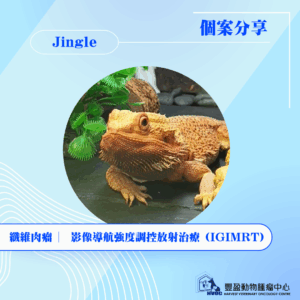
Earlier, HVOC received a special patient, a 3-year-old bearded dragon named Jingle.
⠀
Jingle was diagnosed with fibrosarcoma in November of last year. After an initial surgery, the tumor cells showed extending to tissue margins. After discussions with our Oncology Specialist, it was decided to proceed with RT.
⠀
Fibrosarcoma typically has a low metastatic rate but can be locally aggressive, leading to a higher rate of local recurrence. For this treatment, we employed advanced Image Guided Intensity Modulated Radiation Therapy (IGIMRT) for the treatment of Jingle, reducing the dose received by normal tissues, preventing tumor growth and spread, and minimizing the risk of local recurrence.
⠀
Treatment Planning is a crucial step in RT, requiring precise calculations based on the lizard’s body size, treatment goals, and tumor characteristics. Although Lizard anatomy often differs significantly from that of humans and cats or dogs, it is essential to ensure accurate delivery of radiation dose to the target or treatment area while minimizing damage to normal tissues. The unique skeletal structure and body shape of lizards present challenges in developing and positioning radiation therapy plans. For example, adjustments need to be made considering the lizard’s rougher skin texture.
⠀
Furthermore, due to the need for animals to remain relatively still during radiation therapy for accurate positioning and treatment, appropriate anesthesia techniques and immobilization devices were used to ensure Jingle’s stability throughout the treatment process. We collaborated closely with Maple Exotic Veterinary Hospital’s veterinarians and nurses to ensure Jingle’s safety and comfort during treatment. We are grateful for their support and trust throughout the treatment process.

